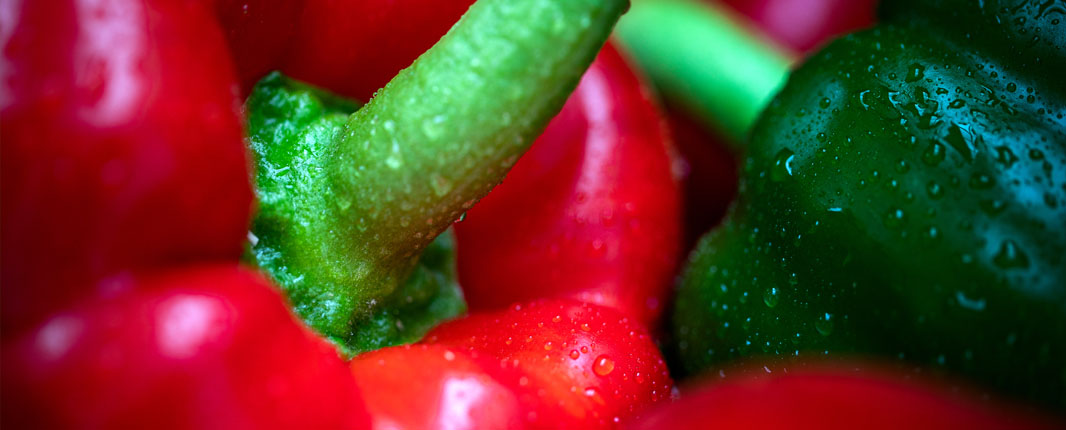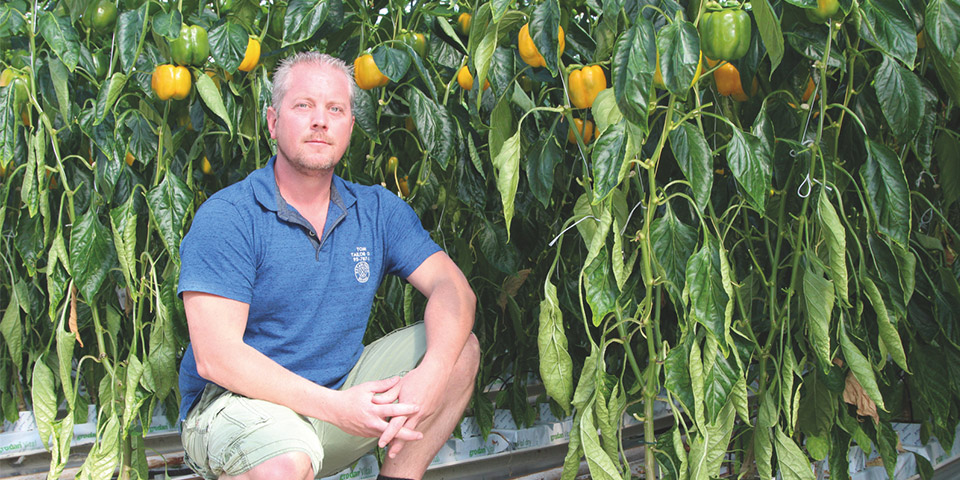
Content

The cultivation and consumption of sweet peppers is increasing worldwide. Breeders are working hard to expand and improve the range of sweet peppers: from seedless varieties to snack peppers.
Anyone who grew up during the 1970s will remember it well: the filled green sweet peppers that our mothers suddenly started serving proudly at dinner time. And this fruiting vegetable was here to stay. Though nowadays it is more often eaten raw, in all colours and in mini sizes. “The market is expanding particularly outside the traditional cultivation centres in Europe,” according to Wouter Lindeman, Crop Research Manager Pepper for glasshouse cultivation. And the breeding process has also moved forward, because different climate zones and cultivation systems place different demands on varieties.
The mature European market is witnessing only limited growth in the acreage of covered sweet pepper cultivation. But the cultivation is expanding rapidly in North America (including Mexico) and Asia. Russia, which has invested significantly in high-tech agricultural complexes for the cultivation of tomato and cucumber for several years now, could follow this example according to Lindeman. “Not in the near future, but I would not be surprised if the covered sweet pepper cultivation there starts to take off in about three to five years.”
Growers in the emerging regions often first use varieties that were developed for cultivation in Southern or Western Europe. “But the climatic conditions, growing systems or market demands are not the same as in Europe,” explains Lindeman. “Now that the cultivation in such areas is expanding, we can also cross and select specifically for these regions. Our portfolio is expanding steadily. Whereas Gialte is the leading yellow variety in the Netherlands, the Canadian and Mexican growers prefer the slightly larger Eurix. The Maranello has been the leading sweet pepper in the red segment in Western Europe for eight years, but in Mexico they prefer Ocelot and Triple 5. Finally, in the orange segment, the Orbit is a variety that performs very well in both Canada and Mexico.”
As is the case with tomatoes, sweet pepper growers are looking for ways to distinguish themselves. Examples include the snack peppers, the Tribelli® concept (multiple colours) and the long conicals. The demand is increasing. And what about the red with yellow flamed Enjoya? “Such a beautiful product deserves exclusivity. It is currently only being cultivated by two companies: one in the Netherlands and one in North America, where the variety is sold under the name Aloha.” Seedless varieties are also being developed, because people appreciate the convenience.
And that is not all. “Ten years ago we developed a new programme that has shifted boundaries of the rootstock. We have developed a number of specific, promising combinations of rootstock and cultivation variety that allow for a significant increase in yield. I expect that a number of innovative growing companies will be interested in gaining experience with these combinations over the coming years. This is also necessary, because both the forcing and cultivation of engrafted plants is a finely tuned process. In sweet pepper cultivation, it is all about achieving the correct crop balance.”

Testing, testing
Working with a specialised plant propagator, grower Richard van den Berg from propagator Berg Peppers in the Netherlands has been closely involved for seven years in the development programme run by Enza Zaden for rootstocks and engrafted sweet pepper plants. “I wanted to participate, even though I realised that there was no guarantee of success,” explains the renowned grower. “If you can find the right combination, then - in my opinion - engrafted plants offer more guarantees for long-term crop vitality, less plant loss and increased fruit weight.” In order to monitor the screening programme closely, the grower allowed us to use a few thousand square metres of glasshouse. We performed the same tests there each year as we do in Enkhuizen, so that the results can be compared.
The grower thinks that it is too soon to make a structural shift towards engrafted plants, although he has seen progress in the programme. “Enza Zaden performs thorough research and provides feedback about the results. We are approaching the point that is required to justify the higher costs of engrafted plants. These costs are significant and you really need to produce more kilograms to justify the financial aspects. I may need to look more specifically at the boundaries of cultivation, but I definitely will not take any major risks. Overall, this is a great learning process, which I can benefit from as soon as engrafted plants really take off. You can bet that I will be ready to lead the way.”